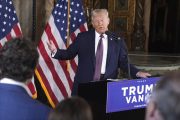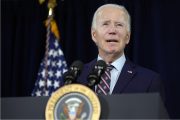As reported in yesterday’s posting, the Islamist group, Hizb ut-Tahrir al Islami (The Islamic Liberation Party, hereafter designated by the abbreviation HT), held a recruiting conference in Chicago on Sunday July 19. The title and theme of the conference was "The Fall of Capitalism, the Rise of Islam."
Here is a short HT conference video that makes clear their anti-capitalist, pro-Islamist message:
Apart from the fact that HT has adopted much of the Marxist-Leninist lexicon and dialectically synthesized an Islamo-Leninist ideology and rhetoric, there is good reason to assume that, at least in the Central Asia "republics" of the former Soviet Union, HT has been co-opted by the security services (successors of the renamed KGB) or was created outright as a "false flag" operation to provide controlled opposition.
Unlike the Baltic States and other European states that were clamoring for independence from the Soviet Union, the rulers of the Central Asian states (Uzbekistan, Tajikstan, Kyrgyzstan, Kazakhstan, Turkmenistan) of the USSR were reluctant to shed their Soviet skin, and even since "independence" have stayed closely tied to the Kremlin. Like all totalitarian regimes — Russia, China, Cuba, Iran, North Korea, Syria — they remain, essentially, black boxes, largely impervious to outside investigation. Their geographic isolation greatly enhances the efficiency of their security services in controlling what information (or disinformation) gets out, which outsiders get in, and what they will be allowed to see and hear.
Uzbekistan seems to be the main area where terrorist activities are attributed to HT and other groups connected to it, such as the Islamic Movement of Uzbekistan (IMU). As mentioned in yesterday’s posting, scholar/lobbyist Zeyno Baran has been one of the principal conveyor belts of the charges that the Tashkent bombings of 1999, the Tashkent and Bukhara bombings of 2004, and the Andijan Massacre of 2005 were the work of Islamic terrorists (HT and IMU) and provide ample reason to support the regime of Stalinist stalwart Islam Karimov in Uzbekistan.
Bush administration officials, such as Elizabeth Jones, the U.S. assistant secretary of state for Europe and Eurasia, made similar arguments, as for instance, in her testimony before Congress.
Another analyst, David Storobin similarly concluded that the Karimov regime was under heavy assault from terrorists, which was a major crisis blocking political reform in that country. He wrote:
Because of the terror network that has been established by the Taliban, Saudis, Egyptian and Palestinian fundamentalists, as well as others in Uzbekistan, the government cannot move towards democratic liberalization. Rather than building up its political institutions and economic system, Uzbekistan is stuck trying to fight terrorist organizations, such as Hizb ut-Tahrir al-Islami and the Islamic Movement of Uzbekistan — and any other Islamist terrorist organization that chooses to set up bases in the country.
Perhaps the most influential lobbyist for the Central Asian regimes, though, is Professor S. Frederick Starr of the Central Asia Caucasus Institute (CACI) at Johns Hopkins University. For his slavish support of dictator Islam Karimov, Dr. Starr has earned the title of "Professor of Repression." He can be counted on faithfully to toe the party line, sing the praises of Karimov and his fellow dictators in the region, and defend the most brutal practices as necessary measures against the threat of "Islamic extremism."
However, many independent scholars and analysts refused to overlook the evidence and suspicious circumstances pointing to the likelihood that these "terrorist attacks" were actually "provocations" by the SNB, the Uzbek KGB.
Nozima Kamalova, for example, a Central Asia specialist at the Woodrow Wilson International Center for Scholars, noted in a 2007 study for the Center, "The War on Terror and Its Implications for Human Rights in Uzbekistan":
With what appears to be a staged bombing, the Uzbek government may have wished to demonstrate to its American allies that terrorism exists in Uzbekistan and that there is a need for additional funding and support under the guise of a campaign against terrorism.
Likewise, Central Eurasia scholar Sarah Kendzior (Washington University in St. Louis) challenges Baran and others who accept at face value the propaganda spoon-fed to them by the professional SNB propagandists in Tashkent. Her study, "Inventing Akromiya: The Role of Uzbek Propagandists in the Andijon Massacre," provides sobering reflection on the alarming degree to which Western governments, academics, and journalists have been willing to turn blind eyes toward evidence that they are being manipulated by the Uzbek regime.
In addition to these scholarly works, there is the testimony of former SNB agent Major Ikrom Yakubov, who says President Karimov personally ordered "false flag" provocations such as the Andijon Massacre (Uzbekistan’s Tiananmen Square), the Tashkent/Bukhara bombings, and the murder of UN coordinator Richard Conroy, a British citizen. Yakubov, who defected to Britain last September, adds to considerable evidence compiled by journalists, human rights activists, and exiles, as well as the charges of former British Ambassador to Uzbekistan Craig Murray.
Murray, who is now rector of the University of Dundee and is campaigning this year for election to Parliament, was forced to step down from his diplomatic post for exposing Karimov’s widespread practices of torture and murder — and even more for exposing the complicity of the United States and Britain in those crimes.
In his book, Murder in Samarkand, Murray writes about his own personal inspection of the Tashkent bombing sites shortly after the explosions. "I reported that back to London — that I suspected these were ‘false flag’ bombing operations carried out by the Uzbek government in order to justify their clampdown and demonize the opposition," says Murray. "What [Yakubov] is saying appears to back up the physical evidence which I personally witnessed on the ground. I think his information does appear to stand up."
Yakubov, who was involved in SNB provocations, says that many of the men cited as terrorists by the Uzbek government are actually "false flag" creations of the SNB. Radio Free Europe reports:
In a related charge, Yakubov says the regime itself has propped up many alleged extremist groups and their leaders, including Tahir Yuldash, the purported IMU leader, and Akram Yuldash, the alleged spiritual leader of Akramia, the group Uzbek authorities blamed for sparking the unrest in Andijon.
"Akram Yuldash, Tahir Yuldash — these are specially created men by SNB," Yakubov says. "IMU also [was] created by SNB, according to the order of Karimov. Tahir Yuldash has a very close contact with Karimov, and Tahir Yuldash [carries out] the orders of Karimov."
Yakubov adds that he has seen classified papers addressed to Karimov stating that Yuldash himself killed Juma Namangani, his predecessor as IMU leader, in order to take sole leadership of the organization.
It should come as no surprise that the SNB would carry out a series of bombing provocations. It served several important purposes, not the least of which was to bolster appeals for Western aid. Of course, it also provided Karimov with a "national security" cover to justify tighter police-state crackdowns on his own people. In all of this the Uzbek SNB was merely putting into practice what it had learned from its big brother, the Russian KGB/FSB. In fact, the "terrorist" bombings in Tashkent and Bukhara were carbon copies of the FSB’s false flag "terrorist" bombing campaign in Russia that was blamed on Chechen Islamists. The main purposes of that series of provocations were: 1) to justify, and win public support for, a new Russian invasion and occupation of Chechnya, and; 2) to cast Vladimir Putin (former head of the FSB), then virtually unknown, as a strong, decisive leader, and to propel him into the presidency.
It is sad testimony to the frightening degree of control exercised over our own media that so few Americans are even aware of the huge body of evidence — much of it even from establishment media sources — substantiating the charges that the Russian FSB, not the Chechens, were behind the September 1999 apartment bombings in Buynaksk, Moscow, and Volgodonsk that killed nearly 300 people and injured hundreds more. The government-controlled Russian media fanned the flames of hysteria. Outrage and calls for revenge against Chechnya soon followed. Putin, responding to "the people’s will," launched a new wave of savage destruction upon the hapless people of Chechnya.
Here are a few of the many sources concerning the FSB hand behind the "Chechen Terror" bombings in Russia:
Blowing Up Russia: The Secret Plot to Bring Back KGB Terror by Alexander Litvinenko, the FSB colonel who defected to the West in 2001 and began exposing the totalitarian and criminalist nature of the new KGB/FSB-dominated Putin regime. This included revelations concerning the false flag "Chechen terror" bombings. He paid for this "treason" with his life; he was publicly (and very dramatically) executed by polonium poisoning in London in 2006. The evidence points to the FSB and then-President Putin as the executioners.
The Assassination of Russia is a video documentary produced by former Russian oligarch Boris Berezovsky, who was once part of the Yeltsin power structure and now is in exile in Britain. This video presents excellent testimony and compelling evidence supporting the charges that the 1999 "Chechen Terror" bombings in Buynaksk, Moscow, and Volgodonsk, and the attempted bombing in Ryazan were the work of Russia’s FSB:
"THE FIFTH BOMB: DID PUTIN’S SECRET POLICE BOMB MOSCOW IN A DEADLY BLACK OPERATION?" by John Sweeney reporter for The Observer (UK), November 24, 2000. Focusing on the failed Ryazan bombing, this article is especially important for presenting the close-up photographs taken by the Russian bomb squad of the detonator of the bomb that was deactivated before it could explode in the Ryazan apartment building. The photographs show, say experts, a detonator that is distinctively FSB in signature.
Fears of Bombing Turn to Doubts for Some in Russia by Maura Reynolds, Russian correspondent for the Los Angeles Times, January 15, 2000. This was one of the earliest investigative pieces by American reporters to question the generally accepted story put out by the Putin regime blaming the Chechens.
"Russia ‘planned Chechen war before bombings’ : Former Prime Minister reveals invasion of republic was prepared months in advance of terrorist attacks" by Patrick Cockburn, Moscow correspondent of the British newspaper, The Independent, January 29, 2000. Among the important bombshells dropped by Cockburn in this article:
1) Jan Blomgren, Moscow correspondent for the Swedish daily Svenska Dogbladet, had reported on June 6, 1999 that according to his sources in the Kremlin one option being considered by the Russian government was "terror bombings in Moscow which could be blamed on the Chechens." This was four months before the first bomb went off.
2) Sergei Stepashin, the former Interior Minister and Prime Minister, had openly stated in recent interviews with Russian media that he had been involved in top-level government plans for the invasion of Chechnya in March of 1999. This contradicted the official Russian line that the Russian invasion was purely a response to the terror bombings of September.
3) That top Russian officials Alexander Voloshin and Anton Surikov held a secret meeting in France in July 1999 with Shamil Basayev, a Chechen warlord who was the public face of "Islamic terrorism" in Russia. The purpose of the meeting was to coordinate Basayev’s "Chechen" invasion of neighboring Dagestan, to provide Putin with another reason for attacking Chechnya. Basayev had long been suspected of working for Russia’s KGB/FSB and/or Russia’s military intelligence, the GRU.
"The Shadow of Ryazan:_Is Putin’s government legitimate?" by David Satter, National Review, April 30, 2002. This provides a good overview of the evidence available up to that time of the Russian government’s planning and execution of the terrorist bombings.
"The Smashing of Chechnya" by Nafeez Mosaddeq Ahmed of Media Monitors Network provides a detailed report on the Russian war against Chechnya and an extensive bibliography of links to many stories dealing with the terror bombings in Russia as provocations by the FSB.



